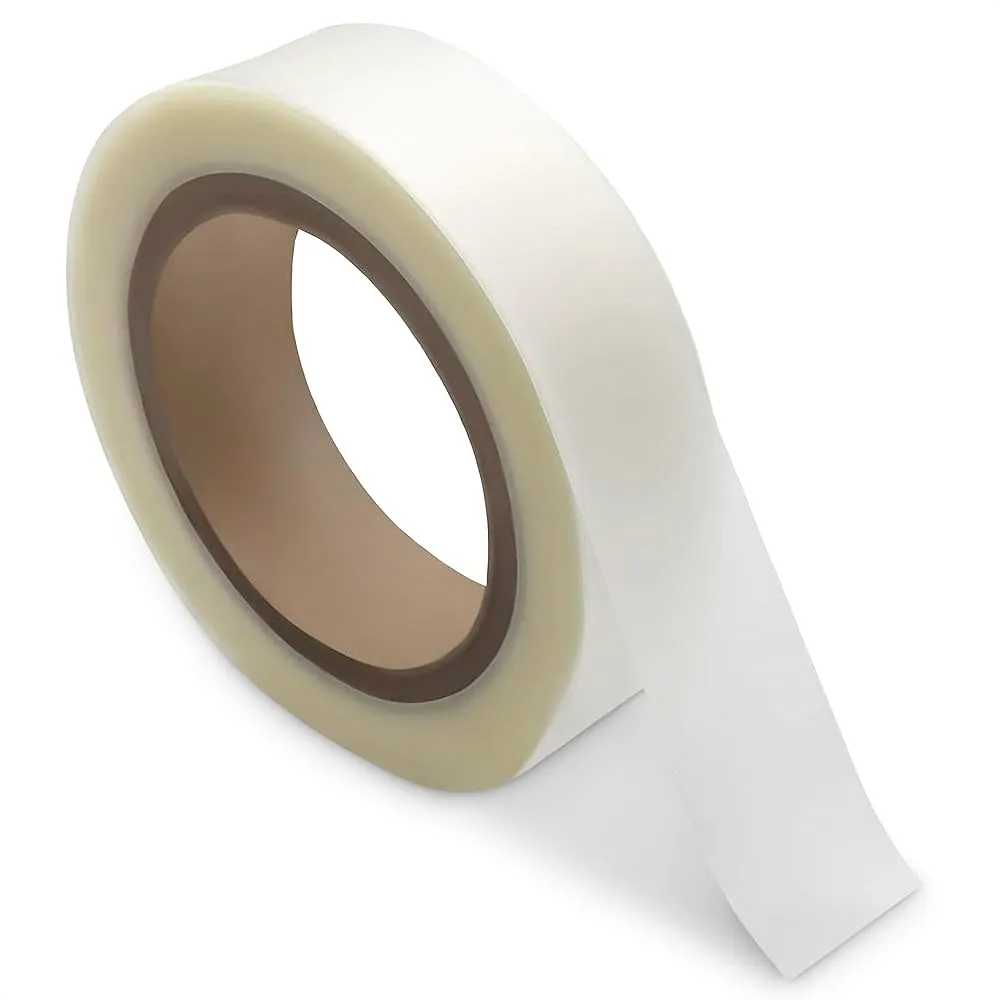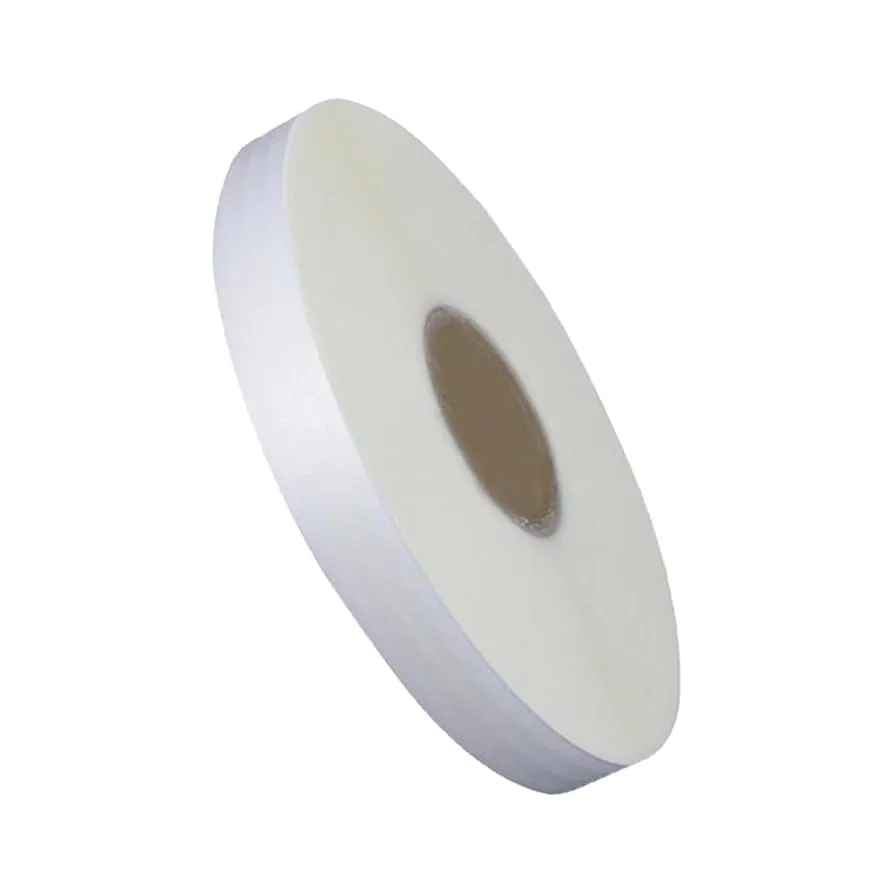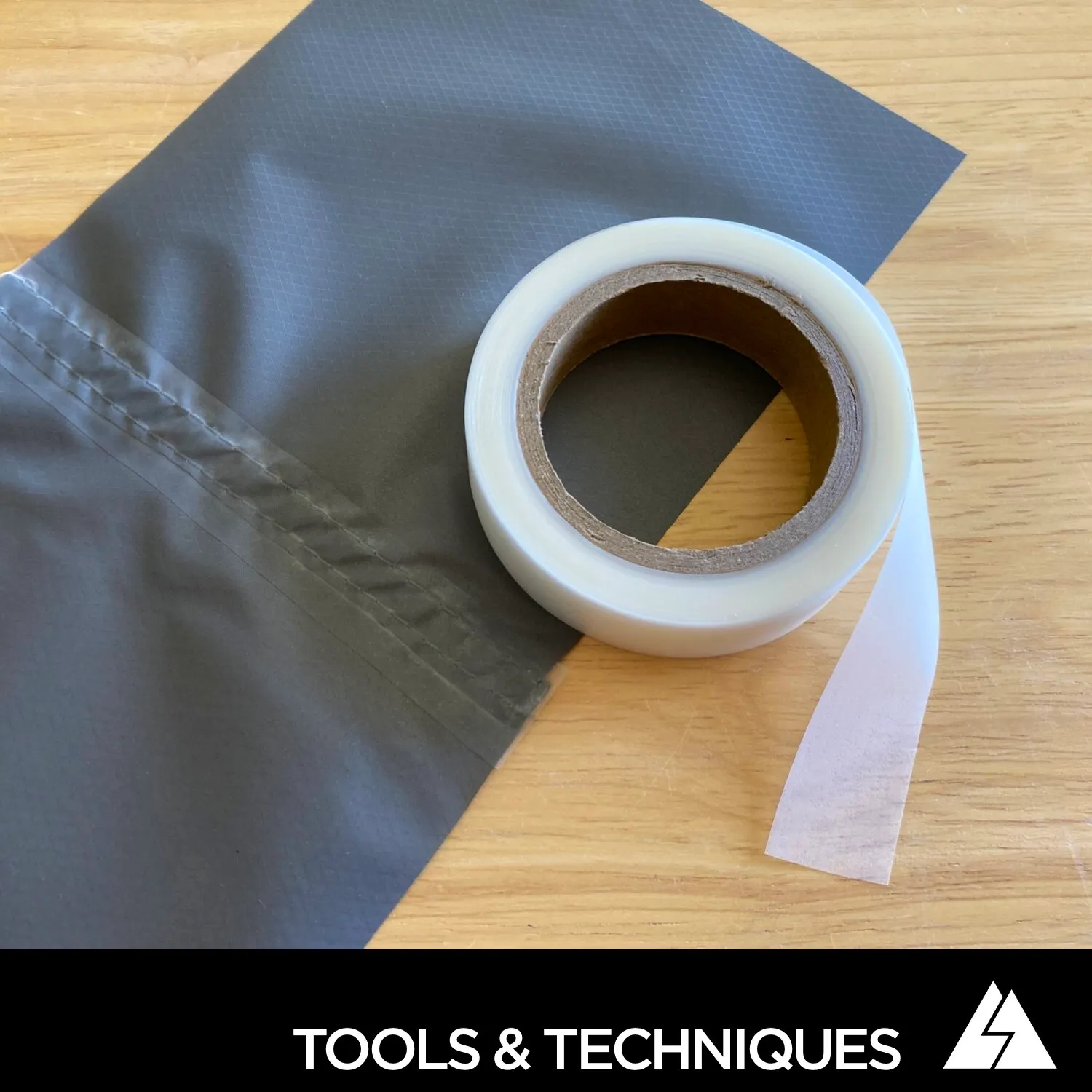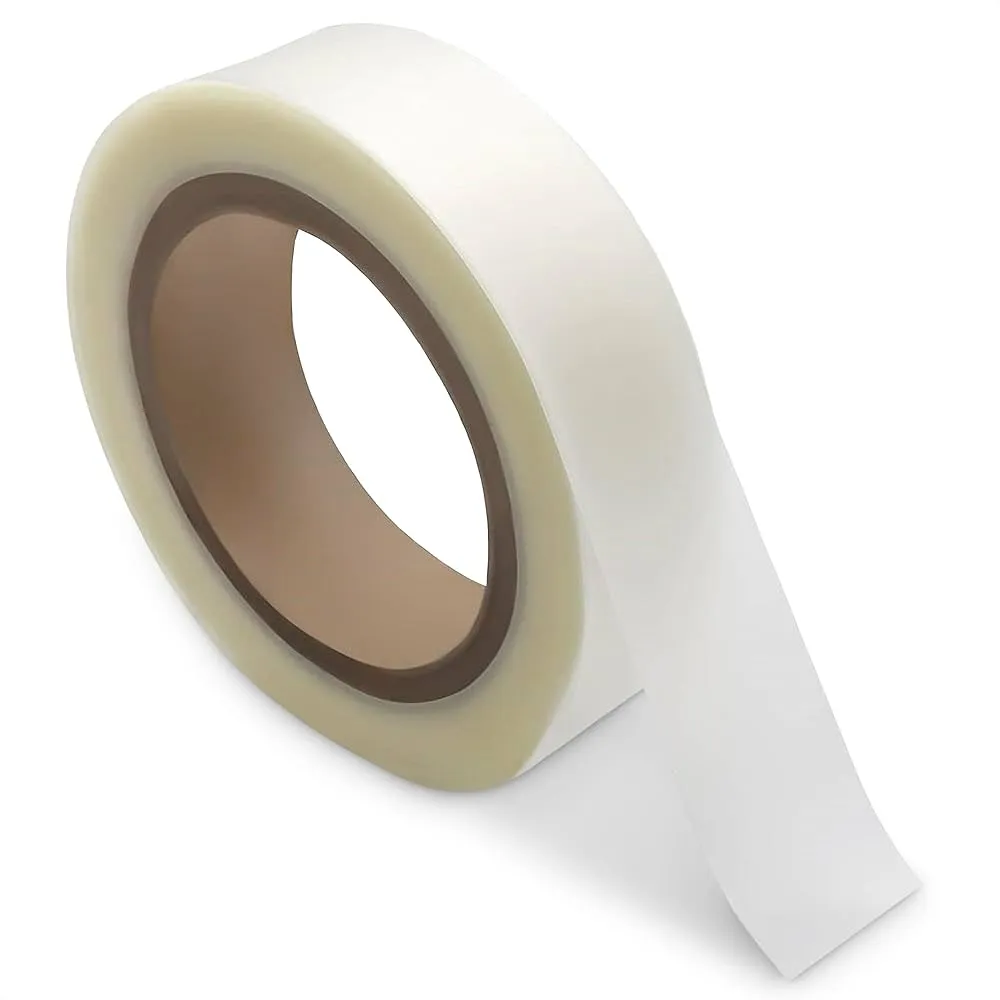Having spent countless nights in the wilderness, I've learned that proper seam sealing is the difference between a comfortable camping experience and a soggy disaster. This comprehensive guide covers everything you need to know about tent seam sealer tape, from understanding different types to mastering application techniques. Whether you're a weekend warrior or a seasoned backpacker, you'll discover the tools and knowledge needed to keep your gear completely waterproof. Visit NatureGuests.com for more outdoor gear insights.
Understanding Tent Seam Sealer Tape

During my years of outdoor adventures, I've encountered countless situations where inadequate seam sealing led to gear failure. Tent seam sealer tape is a specialized waterproofing solution designed to seal the needle holes and seams in outdoor fabrics, preventing water infiltration that can ruin camping trips. Unlike liquid sealants that require curing time and specific application conditions, seam sealer tape offers immediate protection and can be applied in various weather conditions.
The fundamental principle behind tent seam sealer tape lies in its ability to create a continuous waterproof barrier across sewn seams. When manufacturers construct tents, tarps, and outdoor gear, every needle puncture creates a potential entry point for moisture. These microscopic holes, multiplied across hundreds of stitches, can allow significant water penetration during heavy rainfall or extended exposure to moisture.
I remember my first encounter with seam tape failure during a multi-day backpacking trip in the Olympic Mountains. The factory-applied seam tape on my tent's rainfly had begun delaminating after three years of use, allowing water to seep through the seams during a particularly intense Pacific Northwest downpour. This experience taught me the importance of understanding not just how to apply seam tape, but also when and why it fails.
Modern tent seam sealer tape products utilize advanced polymer technologies that bond at the molecular level with fabric fibers. The tape typically consists of a thin film backing material combined with a pressure-sensitive or heat-activated adhesive. When properly applied, it creates a flexible, durable seal that moves with the fabric while maintaining its waterproof properties across temperature variations and mechanical stress.
The effectiveness of seam sealer tape depends heavily on proper surface preparation and application technique. I've learned through trial and error that cleaning the fabric surface, ensuring proper adhesion temperature, and applying consistent pressure are crucial factors that determine long-term performance. For those looking to explore the best seam sealer for tents, understanding these fundamentals is essential for making informed purchasing decisions.
Types and Materials of Seam Sealer Tape
Through extensive field testing and research, I've identified several distinct categories of tent seam sealer tape, each optimized for specific applications and fabric types. The choice of seam tape material directly impacts performance, durability, and compatibility with different outdoor gear fabrics. Understanding these variations is crucial for selecting the appropriate product for your specific needs.
Polyurethane (PU) Seam Tape
Polyurethane seam tape represents the most common and versatile option for general outdoor gear applications. This material offers excellent flexibility, strong adhesion to most fabric types, and reliable waterproofing performance across a wide temperature range. I've used PU tape successfully on everything from lightweight backpacking tents to heavy-duty canvas tarps, finding it particularly effective for PU-coated fabrics commonly used in modern outdoor gear.
The key advantage of PU seam tape lies in its ability to maintain flexibility while providing strong adhesion. During my testing in various mountain environments, I've observed that PU tape maintains its seal integrity even when subjected to repeated flexing and temperature cycling. However, UV exposure can gradually degrade PU materials, making it less suitable for applications requiring extended sun exposure without additional protection.
Thermoplastic Polyurethane (TPU) Tape
TPU seam tape represents the premium option for demanding applications where durability and environmental resistance are paramount. This material offers superior abrasion resistance, enhanced UV stability, and excellent performance across extreme temperature ranges. I've found TPU tape particularly valuable for gear that experiences heavy use or exposure to harsh environmental conditions.
The application process for TPU tape typically requires higher temperatures and pressure compared to standard PU options, but the resulting bond strength and longevity justify the additional complexity. During a recent expedition to Patagonia, TPU-sealed gear performed exceptionally well in conditions that caused standard PU tape to fail on other team members' equipment.
Hot Melt Seam Tape
Hot melt seam tape utilizes thermoplastic adhesive that activates when heated, creating a permanent bond with the fabric substrate. This type of tent seam sealer tape provides excellent long-term durability and resistance to adhesive failure, making it ideal for professional repairs and high-performance applications. The application process requires careful temperature control and timing, but results in superior bond strength compared to pressure-sensitive alternatives.
Pro Tip from My Experience
After testing dozens of seam tape products, I've found that fabric compatibility is more important than tape type. Always test a small, inconspicuous area first, and consider the specific coating on your gear when selecting tape material. When dealing with tent seam tape coming off, the underlying fabric condition often determines repair success more than the replacement tape choice.
Applications and Benefits

The versatility of tent seam sealer tape extends far beyond basic tent maintenance, encompassing a wide range of outdoor gear applications that I've discovered through years of field use. Understanding these diverse applications helps maximize the value of seam tape investments while ensuring comprehensive gear protection across different outdoor activities and environmental conditions.
Primary applications include tent rainfly sealing, where factory-applied tape may degrade over time, requiring replacement to maintain waterproof integrity. I've personally re-sealed dozens of tents using quality seam tape, extending their useful life by several years while maintaining reliable weather protection. The process typically involves removing old, degraded tape and applying fresh material to restore complete waterproofing.
Backpack and gear bag sealing represents another critical application where tent seam sealer tape proves invaluable. Modern technical packs often feature waterproof fabrics that require seam sealing to achieve complete moisture protection. During a recent expedition to the Alaska Range, properly sealed gear bags kept electronic equipment and clothing completely dry despite continuous exposure to snow and condensation.
Rain gear and technical clothing benefit significantly from seam tape applications, particularly in areas subject to high stress or frequent flexing. I've found that preventive sealing of critical seams on rain jackets and pants dramatically improves their performance during extended use in wet conditions. The key is identifying high-stress areas like shoulder seams, pocket attachments, and zipper installations where water infiltration is most likely to occur.
Tarp and shelter applications showcase seam tape's versatility in creating custom weather protection solutions. I frequently use seam tape when modifying tarps for specific applications or repairing damage sustained during use. The ability to create reliable waterproof seams enables innovative shelter configurations that would be impossible with unsealed fabric joints.
The benefits of proper seam sealing extend beyond basic waterproofing to include enhanced durability and extended gear life. By preventing water infiltration at seams, properly applied tape reduces the likelihood of fabric degradation, mold growth, and structural failure that can result from prolonged moisture exposure. This protective effect is particularly important for expensive technical gear where replacement costs can be substantial.
Weight savings represent an often-overlooked benefit of seam tape compared to liquid sealants. While liquid products require multiple coats and extended curing time, tape applications provide immediate protection with minimal weight addition. This efficiency is particularly valuable for ultralight backpacking applications where every gram matters. For comprehensive information on liquid alternatives, explore options for tent seam sealer spray products.
Top Tent Seam Sealer Tape Products
After extensive testing and field evaluation, I've identified several standout products that consistently deliver reliable performance across diverse outdoor conditions. These recommendations are based on real-world testing, longevity studies, and compatibility with common outdoor gear fabrics. Each product offers unique advantages for specific applications and user requirements.
VIKROM Tent Seam Tape - Best Overall Value
This 65-foot roll of 0.8-inch wide waterproof tape offers exceptional value for general sealing applications. The polyurethane construction provides excellent flexibility and adhesion to most fabric types, while the generous length ensures sufficient material for multiple projects. I've used this tape successfully on various tent types and found it particularly effective for emergency repairs.
GEAR AID Seam Grip WP - Premium Performance
While technically a liquid sealant, GEAR AID's Seam Grip WP deserves mention for its exceptional performance in critical applications. This waterproof sealant and adhesive can seal up to 12 feet of seams and provides permanent, flexible protection. I've found it particularly valuable for high-stress applications where tape might not provide adequate durability.
Hot Melt Seam Sealing Tape - Professional Grade
For users requiring professional-grade performance, hot melt seam sealing tape offers superior bond strength and longevity. This 30-meter roll provides excellent coverage for large projects, while the PU material ensures compatibility with most outdoor fabrics. The iron-on application process requires more care but results in exceptionally durable seals.
GEAR AID Tenacious Tape - Versatile Repair Solution
This 3x20 inch repair tape offers exceptional versatility for both seam sealing and general fabric repair applications. The clear vinyl construction provides strong adhesion while remaining virtually invisible on most fabrics. I've found it particularly valuable for emergency repairs and temporary sealing solutions in field conditions.
Gorilla Waterproof Patch & Seal Tape - Heavy Duty Option
For extreme conditions requiring maximum durability, Gorilla's waterproof patch and seal tape provides exceptional strength and weather resistance. This 4x10 foot roll offers substantial coverage for large projects, while the rubberized backing ensures flexibility and longevity. I've used this successfully for emergency shelter repairs in harsh mountain environments.
Step-by-Step Application Guide
Professional seam sealing demonstration and repair techniques
Proper application of tent seam sealer tape requires careful preparation, precise technique, and attention to environmental conditions. Through years of field experience and numerous successes and failures, I've developed a systematic approach that maximizes adhesion strength and longevity while minimizing application time and material waste.
Essential Preparation Steps
Surface preparation represents the most critical factor in achieving successful seam tape application. I begin by thoroughly cleaning the fabric surface with isopropyl alcohol to remove dirt, oils, and residue that could interfere with adhesion. The cleaning process should extend at least one inch beyond the intended tape placement area to ensure complete surface preparation.
Temperature and humidity control significantly impact application success. I've found that applications performed in temperatures between 60-80°F with low humidity provide optimal results. Cold conditions reduce adhesive flow and bonding strength, while high humidity can interfere with proper cure. When field conditions are suboptimal, I create a controlled environment using body heat or portable heating sources.
Old tape removal requires patience and proper technique to avoid fabric damage. I use a heat gun or hair dryer to soften the adhesive, then carefully peel the tape while maintaining steady, even pressure. Residual adhesive can be removed using commercial adhesive removers or careful scraping with a plastic tool. Complete removal of old material is essential for achieving proper adhesion with new tape.
Application Technique
The application process begins with careful measurement and cutting of tape segments slightly longer than the seam length. I prefer to work with manageable sections of 12-18 inches to maintain control and ensure proper positioning. Pre-cutting all required segments before beginning application prevents delays that could affect adhesive performance.
For pressure-sensitive tapes, I remove the backing paper gradually while positioning the tape over the seam. The key is maintaining consistent pressure and avoiding air bubbles that could compromise the seal. I use a smooth, firm tool like a plastic squeegee or bone folder to apply even pressure across the entire tape width, working from the center outward to eliminate trapped air.
Hot melt tape applications require more precision and equipment but provide superior bond strength. I use a household iron set to the appropriate temperature (typically 250-300°F) and work in sections, applying steady pressure for 10-15 seconds per area. The key is maintaining consistent temperature and pressure while avoiding overheating that could damage the fabric or adhesive.
Joint overlaps and corners require special attention to ensure complete sealing. I overlap tape segments by at least 1/4 inch and pay particular attention to stress concentration points where failure is most likely to occur. Corner applications benefit from pre-cutting tape to fit precisely, avoiding bunching or wrinkles that could compromise the seal. For detailed guidance on general sealing techniques, reference information about seam seal tape applications.
Maintenance and Troubleshooting

Long-term success with tent seam sealer tape depends on proper maintenance practices and prompt attention to emerging problems. Through years of gear maintenance and field repairs, I've developed systematic approaches for monitoring tape condition, identifying potential failures, and implementing preventive measures that extend service life and maintain waterproof integrity.
Regular inspection should focus on high-stress areas where tape failure is most likely to occur. I examine seam tape condition before and after each extended use, paying particular attention to corners, stress concentration points, and areas subject to repeated flexing. Early detection of edge lifting, discoloration, or adhesive failure enables proactive repairs that prevent complete seal failure.
Environmental factors significantly impact tape longevity and performance. UV exposure gradually degrades most tape materials, while temperature cycling can cause adhesive failure and substrate separation. I've found that storing gear in cool, dry conditions and minimizing prolonged sun exposure substantially extends tape life. When extended UV exposure is unavoidable, I apply UV-protective treatments or plan for more frequent replacement.
Common failure modes include edge lifting, center delamination, and adhesive degradation. Edge lifting typically results from inadequate surface preparation or contamination during application. I address this by cleaning the affected area and applying fresh tape with proper overlap. Center delamination often indicates incompatible adhesive systems or substrate degradation, requiring complete tape replacement.
Adhesive degradation manifests as sticky residue, discoloration, or complete bond failure. This condition typically requires complete tape removal and replacement, often indicating that the underlying fabric coating has also degraded. I've learned to recognize the early signs of adhesive breakdown and plan replacements before complete failure occurs.
Field repair techniques enable temporary fixes that can extend trip duration until proper repairs can be completed. I carry repair tape and basic tools on all extended trips, enabling quick fixes for minor failures. Temporary repairs should be considered exactly that – temporary solutions that require proper attention as soon as conditions permit.
Preventive maintenance includes proper storage, regular cleaning, and systematic inspection schedules. I clean tape surfaces with mild soap and water, avoiding harsh chemicals that could damage the adhesive or substrate. Proper storage in cool, dry conditions with minimal compression helps preserve tape integrity and extends service life. For additional insights into addressing specific tape problems, explore solutions for tent seam sealer tape maintenance and repair.
Conclusion
Mastering the use of tent seam sealer tape represents a crucial skill for any serious outdoor enthusiast. Through this comprehensive guide, I've shared the knowledge and techniques developed through years of field experience, product testing, and continuous learning. The investment in quality seam tape and proper application techniques pays dividends through extended gear life, enhanced weather protection, and increased confidence in challenging conditions.
The key to success lies in understanding that seam sealing is both an art and a science. While the technical aspects of material selection, surface preparation, and application technique are important, the practical skills developed through hands-on experience ultimately determine long-term success. I encourage readers to start with simple projects and gradually build expertise through progressive challenges.
Product selection should be based on specific application requirements rather than universal recommendations. The VIKROM tape offers excellent value for general applications, while specialized products like GEAR AID's Seam Grip provide superior performance for critical applications. Understanding the strengths and limitations of different products enables informed decisions that match capabilities with requirements.
The environmental impact of proper seam sealing extends beyond personal gear protection to encompass broader sustainability considerations. By extending gear life through proper maintenance and repair, we reduce the demand for new equipment manufacturing and associated environmental impacts. This approach aligns with principles of responsible outdoor recreation and environmental stewardship.
Looking forward, advances in materials science and manufacturing technology will continue to improve seam tape performance and ease of application. However, the fundamental principles of proper surface preparation, compatible material selection, and careful application technique will remain unchanged. Building expertise in these areas provides a foundation for adapting to new products and technologies as they emerge.
I encourage readers to view seam sealing as an ongoing learning process rather than a one-time skill acquisition. Each project provides opportunities to refine techniques, test new products, and develop deeper understanding of material interactions and failure modes. This continuous improvement approach ensures that your skills remain current with evolving technologies and changing requirements.
Remember that proper seam sealing is ultimately about enabling outdoor adventures rather than becoming an end in itself. The goal is reliable gear that performs when needed, allowing you to focus on the experiences and challenges that drew you to the outdoors in the first place. Whether you're preparing for a weekend camping trip or a month-long expedition, properly sealed gear provides the foundation for successful and enjoyable outdoor experiences.
Ready to Upgrade Your Gear Protection?
Start your seam sealing journey today with professional-grade products that deliver reliable performance in any conditions.
Shop Premium Seam Tape

